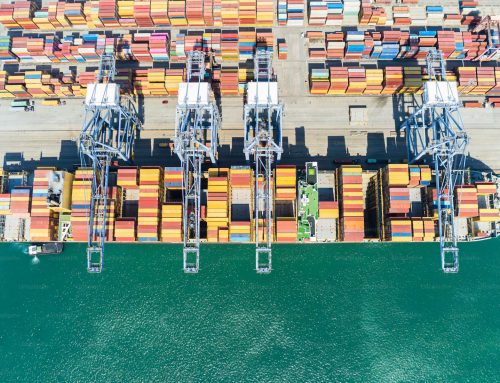Qifeng Yan
Doctoral Researcher at HUMLOG Institute
The allegedly ground-breaking artificial intelligence Chat GPT has attracted wide attention in the recent months. Many seek to find ways to make the most out of the technology in their field. It has been used in various creative purposes. Artists use it to realize artistic works that are not doable on their own. Companies uses it to facilitate their operations. Even some scholars have started to use the technology to find weak spots and write abstracts for their research work.
Leaving behind all the ethical controversies, artificial intelligence proves to be a powerful tool that can empower professionals from all different fields to achieve either better outcomes or the same outcomes in a more efficient way.
When I tried to explore the discussion of the potential application of AI in supply chain management, I found that most of the discussions are about commercial supply chains, but very few on humanitarian supply chain. Therefore, I would like to take this chance to discuss the strengths and benefits of AI and one concern using AI in humanitarian supply chain management.
In a humanitarian setting, one of the biggest challenges is information sharing and transparency. Because most humanitarian operations are jointed efforts conducted by multiple organizations altogether, it is difficult to keep everyone involved on the same page. During a response, the information also needs to be constantly updated as the situation can evolve quickly. This is one area where AI can be introduced to help. The AI can be the single interface that practitioners have to interact with to stay updated with the latest information. Currently, information is published in different platforms, and it takes unnecessary efforts for practitioners to stay informed about the situation. AI can collect information from multiple public sources and provide the information when asked for. If given authentication, AI can scan across organizational boundaries to find internal information practitioners are looking for.
The low-code or no-code interface with AI is a key factor. One does not need to type cryptic codes to communicate with the AI. A good tool is one that professionals do not speed too much time learning how to use it. This is especially true in the humanitarian sector. Practitioners spend a lot of time specializing in their own expertise and the rest of time being occupied by operations. Any assisting tool with a steep learning curve will be frustrating and infeasible to learn. With a low-code or no-code interface and a user-friendly design, the applications of AI can be scaled up easily. Even professionals as busy as the humanitarian practitioners can pick it up quickly and start using it right away.
Even professionals as busy as the humanitarian practitioners can pick it up quickly and start using it right away.
Another potential application of AI is to make the procurement process more efficient and more transparent. The procurement is a process that sometimes troubles the practitioners. When humanitarian organizations conduct local procurement, it is sometimes difficult to identify the suitable suppliers with sufficient capacity, good quality and reasonable prices. With AI, procurement can be streamlined in that it takes no time for it to gather all relevant information.
Lastly, AI can be used to manage inventory. In some cases, multiple organizations share one warehouse in an area, which makes warehouse management complicated. Some relief items that have a shorter lifespan can also be wasted forgotten in the warehouse. With the help of AI, practitioners can track easily the loans between organizations and the life span of relief items.
Though there are many benefits of applying AI in humanitarian supply chain management, there are also concerns to keep in mind and today I want to discuss one of them.
AI should be kept as a tool to assist decision-making and should never be tasked with making decisions for humans itself. This sounds like artists using AI to do all their creative work and claim the credits for themselves, but in the humanitarian setting, it will be a graver conversation. In situations where humanitarian supply chains are responding to life-threatening disasters, the consequences of decisions made can be lives or deaths. Even though AI can streamline the decision-making process for the humans, and it may also be tempting to leave the Trolley Problem to the AI so that the humans can circumvent the ethical issues and guiltiness that come with it. But the AI can make mistakes, the costs of which may be too great to bear in such a situation.
The technology is evolving rapidly. Some of the opinions above may look childish in a few years from now. But that is a good sign which signals that we achieve more and problems can be solved more easily than today.

Qifeng Yan is a doctoral candidate at the HUMLOG Institute focusing on the applications of climate science on humanitarna logistics. He is particularly interestd in how the impacts of natural disasters can be mitigated by using climate information in humanitarian operations.




